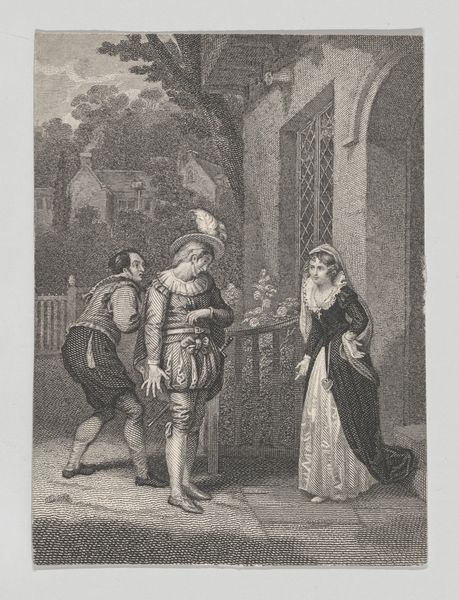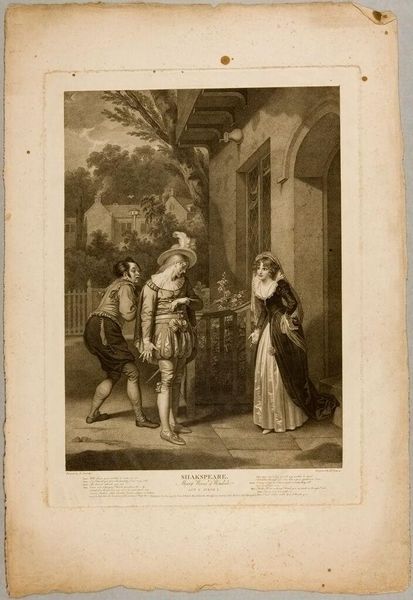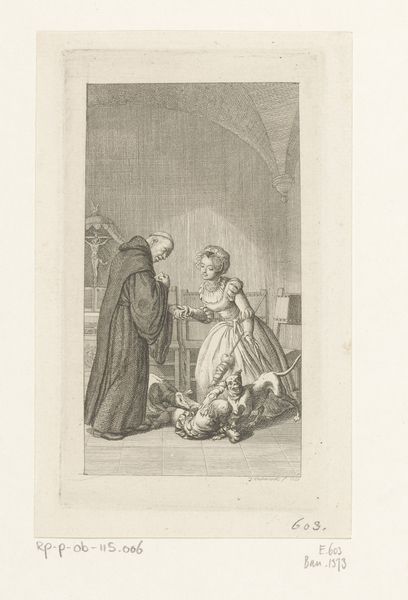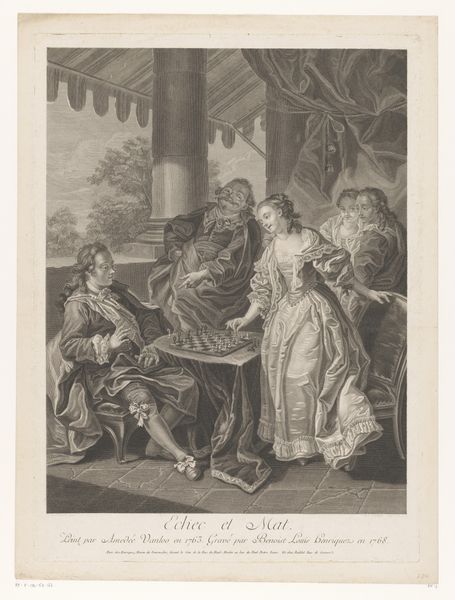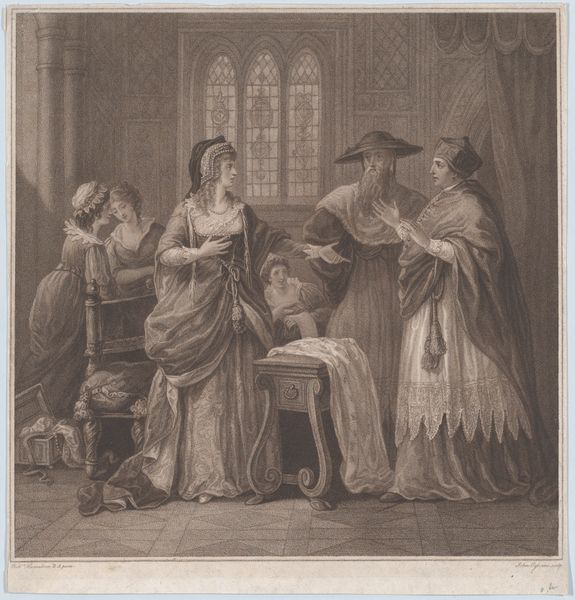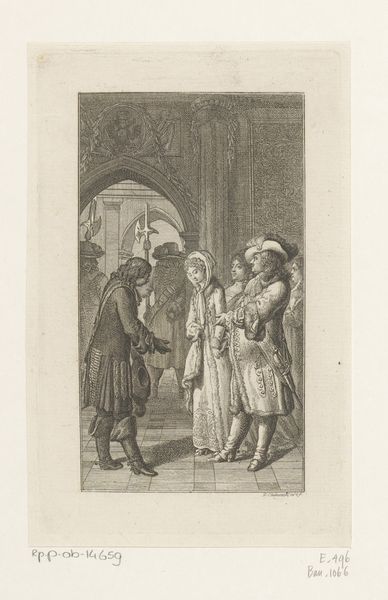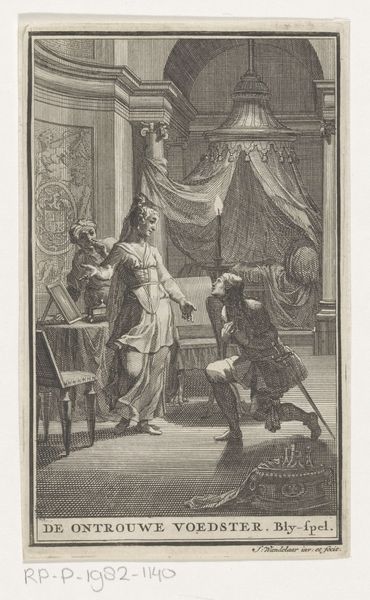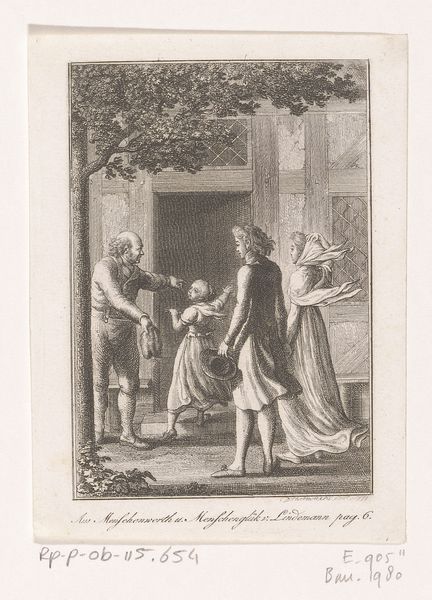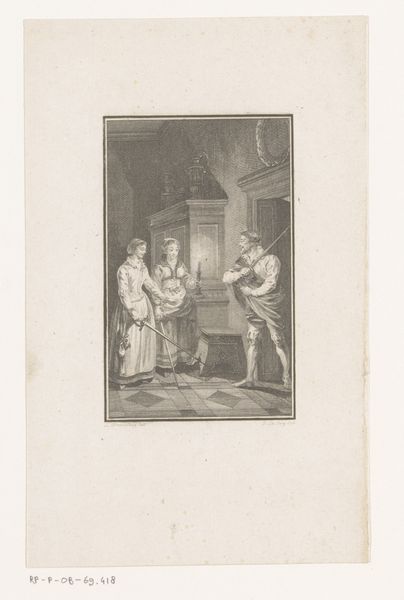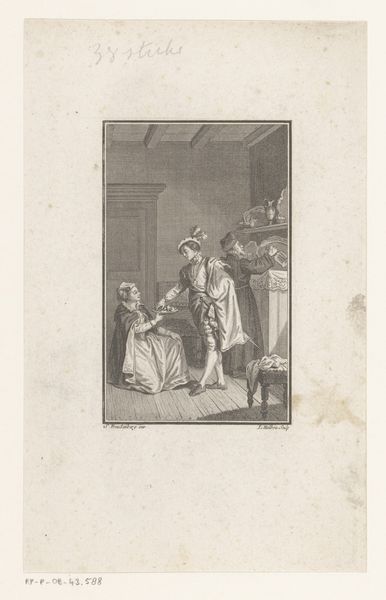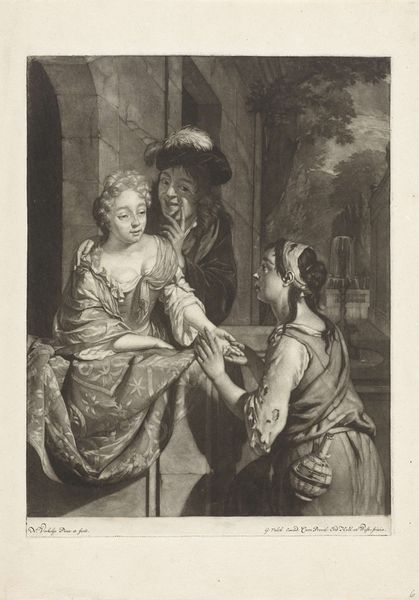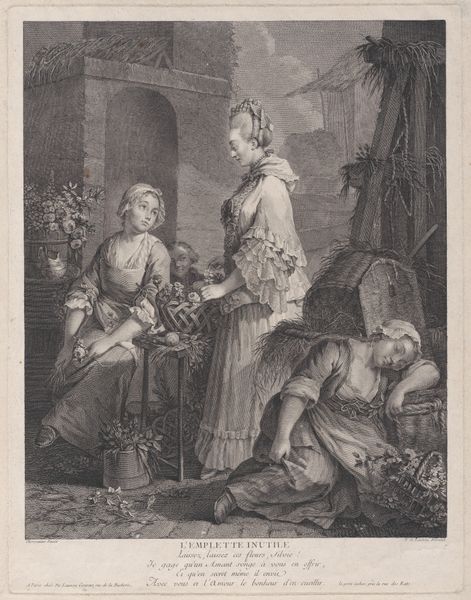
Anne Page, Slender and Shallow (Shakespeare, Merry Wives of Windsor, Act 1, Scene 1) 1792 - 1852
0:00
0:00
drawing, print, engraving
#
portrait
#
drawing
# print
#
landscape
#
figuration
#
romanticism
#
history-painting
#
academic-art
#
engraving
Dimensions: Plate: 25 3/8 × 18 1/16 in. (64.5 × 45.8 cm) Sheet: 27 7/8 × 21 7/8 in. (70.8 × 55.5 cm)
Copyright: Public Domain
Curator: Well, this engraving, dating somewhere between 1792 and 1852, depicts a scene from Shakespeare's "The Merry Wives of Windsor," specifically Act 1, Scene 1, featuring Anne Page. Editor: Gosh, she does look a bit... caught off guard? It's a very staged 'candid' kind of moment. I almost feel bad for her, caught between these two characters, or maybe I'm just feeling protective? Curator: Notice how the artist uses light and shadow. Anne is positioned in a well-lit doorway, almost an idealized domestic space, while the two men lurking seem shrouded in less clear illumination, emphasizing, perhaps, the chaos they introduce into her ordered life. The doorway also symbolically marks a threshold. Editor: Chaos is the word! Those two figures – talk about symbolic baggage! The fellow on the left practically contorts himself into a posture of gleeful anticipation. What’s the semiotics of that cringe alone? Curator: We’re certainly invited to consider the performance of masculinity, even the class implications suggested by their costumes. Remember that in Shakespeare's time, dress signified social status, immediately legible to the audience. Editor: Absolutely, it's like a cartoon version of the landed gentry hitting on an unwilling… well, anybody! And it kind of hits me that that’s a scenario that has just replayed across history like a bad TikTok trend. Is it any wonder those gothic arches look so vaguely ominous, almost imprisoning? Curator: I am so glad you noticed those arches! Gothic architecture often implied history, tradition, but also confinement, especially for women. Anne Page is both a character and a representation, an object of exchange and desire within a patriarchal structure, subtly encoded into the art form here. Editor: See, I knew my empathy for her wasn’t unfounded! Okay, iconographically speaking, does her proximity to that foliage signal anything in particular? Curator: Gardens themselves symbolize both Edenic paradise and female virtue. Anne's location between the somewhat cultivated greenery and the imposing architecture speaks to this dual representation. Editor: It makes one ponder how different Shakespeare would read if more often refracted through such clearly drawn visuals. Curator: Agreed. Visual interpretation can definitely unlock new ways of seeing texts. Editor: All of this consideration over one singular and subtle print from Shakespeare, really lets me see a much grander scope of things that maybe went over my head previously.
Comments
No comments
Be the first to comment and join the conversation on the ultimate creative platform.
